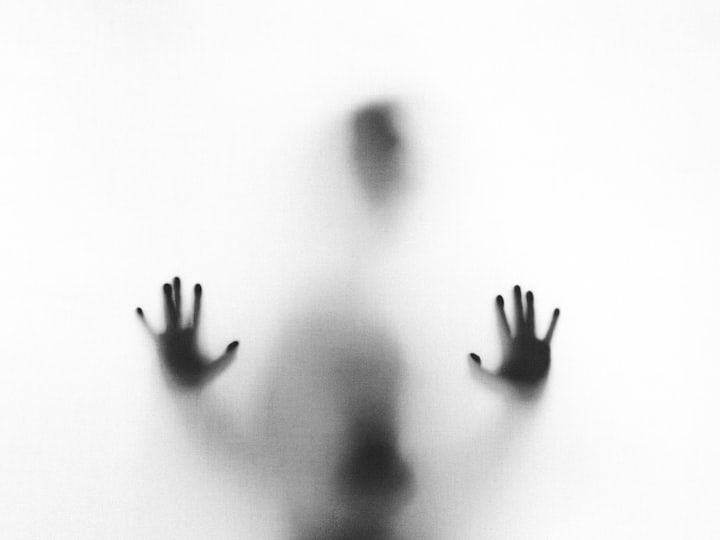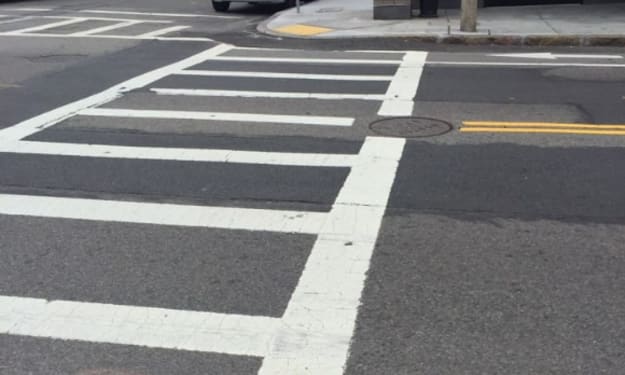The science of ghosts
Here’s what may explain why some people see, hear or feel a spooky presence

#1
A mysterious figure darted through the entrance with an air of secrecy. Dom, with a shiver down his spine, vividly recalls the encounter. The figure possessed a skeletal frame, enveloped by a hazy, ethereal glow. It hovered in the air, devoid of any discernible facial features. Dom, a young adult residing in the United Kingdom, was merely fifteen years old when this spine-chilling incident occurred. Overwhelmed by fear, he instinctively shut his eyes, catching only a fleeting glimpse of the enigmatic figure.
Could this apparition be a ghost? In the realm of United States mythology and various Western cultures, ghosts or spirits are believed to be deceased individuals who interact with the living world. In tales, ghosts may whisper or moan, manipulate objects, disrupt electronic devices, and even manifest as shadowy, indistinct, or translucent entities.
Ghost stories hold immense allure, particularly during the Halloween season. However, some individuals genuinely believe in the existence of ghosts. Chapman University, situated in Orange, California, conducts an annual survey that explores people's beliefs in the paranormal across the United States. In 2018, a staggering 58 percent of respondents agreed with the statement, "Places can be haunted by spirits." Furthermore, a survey conducted by the Pew Research Center in Washington, D.C. revealed that nearly one in five Americans claimed to have witnessed or been in the presence of a ghost.
On television shows dedicated to ghost hunting, individuals employ scientific equipment in an attempt to record or measure supernatural activity. Additionally, a plethora of eerie photographs and videos seemingly provide evidence of ghostly phenomena. However, none of these instances offer substantial proof of the existence of ghosts. Some are cleverly crafted hoaxes, designed to deceive unsuspecting individuals. The remaining examples merely demonstrate that equipment can occasionally capture unexpected noises, images, or signals. Ghosts, among the myriad of possible explanations, are the least plausible.
Not only are ghosts attributed with abilities that defy scientific understanding, such as invisibility or the ability to pass through solid walls, but scientists employing rigorous research methods have failed to uncover any evidence supporting their existence. What scientists have discovered, however, are numerous explanations as to why people may perceive ghostly encounters.
#2
A mysterious figure, possessed by a skeletal frame and ethereal glow, entered a house at the age of fifteen in the United Kingdom. The figure, a young adult, was unsure if it was a ghost. Ghosts are believed to be deceased individuals who interact with the living world, and their stories hold immense allure, especially during Halloween. However, some people believe in the existence of ghosts. Chapman University's annual survey found that 58% of respondents agreed that places can be haunted by spirits. A Pew Research Center survey revealed that nearly one in five Americans claimed to have witnessed or been in the presence of a ghost. Ghost hunting shows use scientific equipment to record or measure supernatural activity, while eerie photographs and videos provide evidence of ghostly phenomena. However, none of these instances offer substantial proof of the existence of ghosts. Some are cleverly crafted hoaxes, while others demonstrate that equipment can capture unexpected noises, images, or signals. Ghosts are attributed with abilities that defy scientific understanding, such as invisibility or the ability to pass through solid walls. Scientists have not found any evidence supporting their existence.
#3
A mysterious figure darted through the entrance with an air of secrecy. Dom, with a shiver down his spine, vividly recalls the encounter. The figure possessed a skeletal frame, enveloped by a hazy, ethereal glow. It hovered in the air, devoid of any discernible facial features. Dom, a young adult residing in the United Kingdom, was merely fifteen years old when this spine-chilling incident occurred. Overwhelmed by fear, he instinctively shut his eyes, catching only a fleeting glimpse of the enigmatic figure. Could this apparition be a ghost? In the realm of United States mythology and various Western cultures, ghosts or spirits are believed to be deceased individuals who interact with the living world. In tales, ghosts may whisper or moan, manipulate objects, disrupt electronic devices, and even manifest as shadowy, indistinct, or translucent entities. Ghost stories hold immense allure, particularly during the Halloween season. However, some individuals genuinely believe in the existence of ghosts. Chapman University, situated in Orange, California, conducts an annual survey that explores people's beliefs in the paranormal across the United States. In 2018, a staggering 58 percent of respondents agreed with the statement, "Places can be haunted by spirits." Furthermore, a survey conducted by the Pew Research Center in Washington, D.C., revealed that nearly one in five Americans claimed to have witnessed or been in the presence of a ghost. On television shows dedicated to ghost hunting, individuals employ scientific equipment in an attempt to record or measure supernatural activity. Additionally, a plethora of eerie photographs and videos seemingly provide evidence of ghostly phenomena. However, none of these instances offer substantial proof of the existence of ghosts. Some are cleverly crafted hoaxes, designed to deceive unsuspecting individuals. The remaining examples merely demonstrate that equipment can occasionally capture unexpected noises, images, or signals. Ghosts, among the myriad of possible explanations, are the least plausible. Not only are ghosts attributed with abilities that defy scientific understanding, such as invisibility or the ability to pass through solid walls, but scientists employing rigorous research methods have failed to uncover any evidence supporting their existence. What scientists have discovered, however, are numerous explanations as to why people may perceive ghostly encounters. However, some people may still believe in ghosts due to personal experiences that they interpret as supernatural. For example, a person who hears unexplained footsteps in an old house may attribute it to a ghost, even though it could be caused by creaking floorboards or other natural phenomena. (QuillBot)individuals genuinely believe in the existence of ghosts.
In 2018, a staggering 58 percent of respondents agreed with the statement, "Places can be haunted by spirits."
Furthermore, a survey conducted by the Pew Research Center in Washington, D.C. revealed that nearly one in five Americans claimed to have witnessed or been in the presence of a ghost.
Not only are ghosts attributed with abilities that defy scientific understanding, such as invisibility or the ability to pass through solid walls, but scientists employing rigorous research methods have failed to uncover any evidence supporting their existence.
What scientists have discovered, however, are numerous explanations as to why people may perceive ghostly encounters.
About the Creator
Enjoyed the story? Support the Creator.
Subscribe for free to receive all their stories in your feed. You could also pledge your support or give them a one-off tip, letting them know you appreciate their work.





Comments
There are no comments for this story
Be the first to respond and start the conversation.